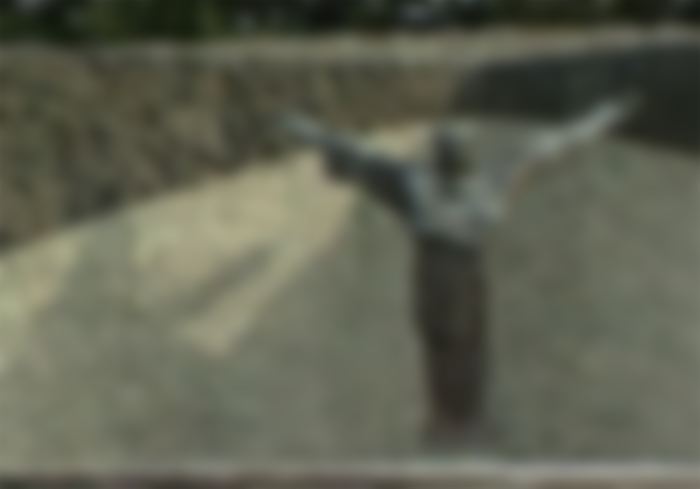On the night of January 27-28, 1573, the famous Peasant Revolt (or the Croatian-Slovenian Peasant Revolt, also called the Great Peasant Revolt or the Peasant War) began with an attack on Cesargrad, led by Ambroz Gubec (later called Matija) from Gornje Stubice.

The reasons for the revolt were multiple, and the main ones were the increase in giving and terror by the nobles. Among the most famous are the violence of the neighboring town-Stubica landowner Franjo Tahy (otherwise the baron of Statenberg in Slovenia), especially against peasant women. The abuse of serfs on his property began when he fell ill, and shortly afterwards his wife Jelena Zrinski (sister of Prince Nikola Zrinski) died.

He was joined in inhumane actions against his own serfs by his four sons, so the resistance of the peasants on Tahi's estate began as early as 1571. King Maximilian II was also informed about the dispute between Franjo Tahi and his serfs. The Habsburgs, who tried to resolve the situation peacefully from Vienna through their intermediaries, but as early as 1572 the serfs refused to return to Tahi's rule and began to organize themselves seriously. They formed a kind of peasant government, headed by Gupac, whom they called a fugitive, and his deputies were Ivan Pasanec and Ivan Mogaić. When they formed the government, the army had to be formed as well. Ilija Gregorić, a veteran of the wars with the Ottomans, was elected the supreme captain of the peasant army.

After complaining in vain to the king and ban about the atrocities of the nobles, the peasants stopped paying unreasonable taxes in protest. After that, Tahy sends his armed mercenaries, but the armed peasants are ready to welcome them. Due to this resistance, the Croatian Parliament, led by Ban Juraj Drašković, declared the peasants traitors to the homeland.
The news of the conviction from Zagreb shook the entire peasantry in Croatia and Slovenia (Styria and Carniola). They began to arm themselves en masse and the peasant revolt spread with increasing speed, and the serfs in these areas began to renounce obedience to their masters. A war plan was drawn up according to which the peasants gathered around Matija Gubac and Ivan Pasanac were to remain in Donja Stubica (where the main focus of the rebellion was) as part of the army that would defend the area, but also guard the borders towards the Ottomans. Ilija Gregorić led the peasants from Cesargrad, who were the initiators of the revolt. Soon the revolt spread throughout Carniola and Styria, and serf units fought bravely and conquered more and more space, including the area between Brežice and Mokrice. Their goals, the abolition of feudalism and the takeover of power by the establishment of a kind of imperial governorship in Zagreb, were getting closer.

Then comes the turning point. Namely, the Uskoks from Žumberak, well-armed and experienced soldiers that the peasants were counting on, after a short hesitation, sided with the feudal lords (who richly rewarded them for that). On February 5, 1573, the peasant army suffered its first defeat near Krško, precisely from the Uskok companies led by Captain Thurn. In the battles near Kerestinec, Mokrice and Krško, a large number of peasants were killed, which discouraged them, so their further resistance in these areas weakened more and more. The army sent by the nobles was constantly growing and this was the beginning of the end of the Croatian-Slovenian peasant revolt.
The decisive battle took place on February 9, 1573 near Stubičke Toplice. The royal army was led by Gašpar Alapić (later the Croatian ban), and when Matija Gubec learned that the king's soldiers were approaching them, he decided to fight to the end. In the beginning, the peasants fought bravely, but the numerical superiority and equipment with weapons were certainly not on their side, and defeat was inevitable. Mogaic was killed on the battlefield, as were many other peasants, and a large number were captured.

Relentless and immoderate was the treatment of those who surrendered or were captured. On all sides in the nearby trees and country houses hung on cross-connected poles, so that everyone could see them, as well as on the tall trees along the military road, sixteen or more unfortunate peasants hung on a rope and exposed to the winds to sway them and birds to them they peck.

Matija Gubec and Ivan Pasanec were brought to Zagreb and executed in a horrific manner on St. Mark's Square on February 15, 1573. According to legend, Gubec had to wear a glowing crown on his head before being quartered by the Hungarian lord Morencz Bahiczy.
The historical battle near Stubica, which showed the "hands" of the 16th century nobles, was reconstructed 12 years ago by the Society of the Knights of the Golden Chalice and became a manifestation of great importance not only for Gupčevo region but also for the entire Krapina-Zagorje County. in the top manifestation of county interest, and the Croatian National Tourist Board, a manifestation of national character. It is not only a struggle and a depiction of the 16th century, it is also an event of an educational-historical character. The great Peasant Revolt of 1573 is taught in schools, written in various history books, and all those present who join the spectacle can for a moment feel the great injustice inflicted on a large number of peasants in the 16th century.






We learned so much in school about Matija Gubec and I also love the rock opera by Josipa Lisac Gubec Beg.